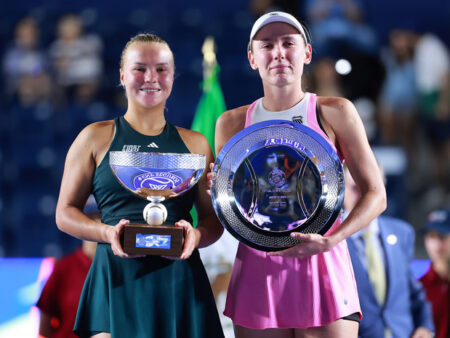Jerzy Janowicz, a formidable talent who once reached world No. 14, recently stirred the tennis pot with a candid observation that has resonated across the sport. From his seasoned perspective, the current titans of the game, **Carlos Alcaraz** and **Jannik Sinner**, while undeniably phenomenal, don`t quite capture the imagination in the same way as the legendary triumvirate of **Novak Djokovic**, **Rafael Nadal**, and **Roger Federer**. It’s a bold statement, particularly coming from a player who faced all three legends during his own career, though never tasting victory against them. His critique wasn`t about raw talent, but rather about the elusive quality of “interest”.
Janowicz openly expressed a profound longing for the era defined by the epic clashes of Djokovic, Nadal, and Federer, even extending his nostalgia to include players like Andy Murray, Stan Wawrinka, and David Ferrer. This wasn`t merely a recollection of great matches; it was a yearning for a period characterized by **distinct personalities**, **contrasting game styles**, and a palpable sense of historical weight in every major encounter. Each match felt like a chapter in an unfolding saga, a testament to individual brilliance battling unique tactical approaches.
His core argument, somewhat provocatively, suggests that “today in tennis everything seems more boring; it seems that everyone plays the same.” This observation, though perhaps colored by sentimentality, touches on a frequently discussed point: the **homogenization of the professional game**. The relentless pursuit of power, baseline dominance, and athleticism has, for some, led to a perceived narrowing of stylistic diversity. Gone are the classic serve-and-volley specialists, the true all-court artists, replaced by an optimized, high-performance baseline game that, while incredibly effective, can sometimes appear less varied to the discerning eye.
To be clear, Janowicz did not diminish the prowess of Alcaraz and Sinner, acknowledging them as “very strong.” And rightly so. Both young champions bring their own electrifying brand of tennis: Alcaraz with his explosive all-court athleticism, audacious drop shots, and unpredictable shot-making; Sinner with his relentless power, precision, and unwavering mental fortitude. They are heirs apparent, already Grand Slam champions, pushing the boundaries of what`s possible on court. Yet, the shadow cast by the “Big Three” is long, and the standard of compelling rivalry and stylistic individuality they set is astronomical.
Perhaps Janowicz`s comments speak to the unique challenge faced by any generation following an era of unprecedented dominance. How does one generate the same level of fascination when the previous act featured three of the greatest athletes to ever grace their sport, each with their own distinct narrative, fan base, and head-to-head epic? It`s a bit like asking a new rock band to immediately fill stadiums with the same fervor as The Beatles, Led Zeppelin, and Queen combined. The talent might be there, but the established narrative, the deep-seated rivalries built over decades, take time to forge.
While nostalgia is a powerful lens, it`s also worth considering the technical evolution of the sport. Modern rackets, strings, and training methodologies have transformed the game, favoring powerful groundstrokes and incredible defensive capabilities. This evolution, while making tennis faster and more physically demanding, may indeed contribute to a certain convergence of playing styles. The margins are tighter, the physical demands immense, and perhaps, the risk of deviating too far from an optimized formula is simply too high for many aspiring professionals.
Janowicz`s insights, whether fully agreed upon or not, serve as a valuable prompt for discussion. They remind us that while raw talent and athletic spectacle are crucial, the enduring appeal of sports often lies in the drama, the distinct personalities, and the unfolding rivalries that capture the collective imagination. Alcaraz and Sinner, along with their contemporaries, are still writing their own stories. The question isn`t if they are “strong” enough – they demonstrably are – but if they can carve out narratives and develop stylistic distinctions that resonate with fans as profoundly as the legends who preceded them. The stage is set, and the future of tennis, for all its perceived uniformity, holds the promise of new, unforgettable chapters.










